Expert Op: Creating Positive Content Experiences
Marketing leaders reveal how they’re ensuring their audience gets the best content experience possible
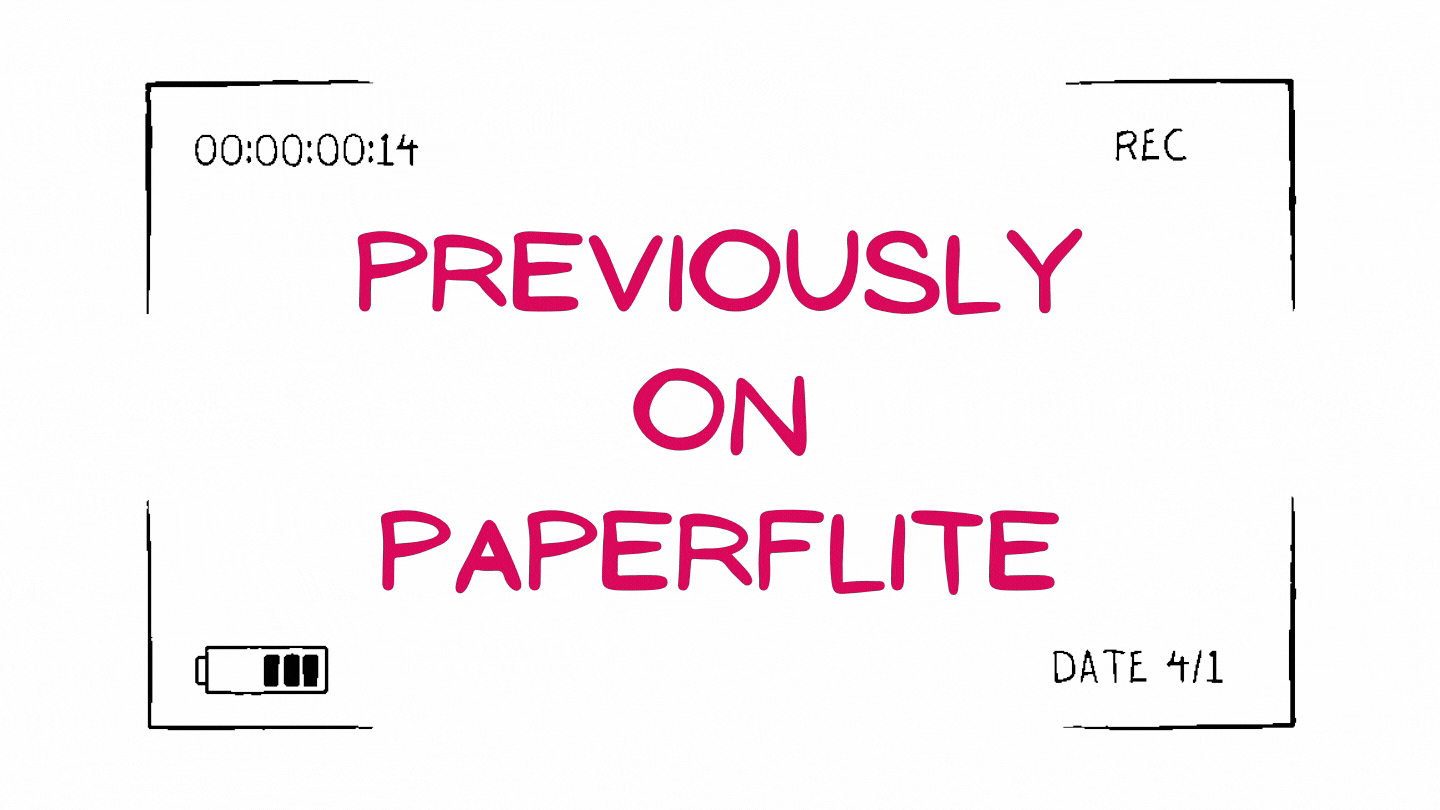
The last time we gathered to discuss content experience, we defined what content experience means in a business context, why your prospects deserve content experiences and few ways to create one.
Here's a recap:
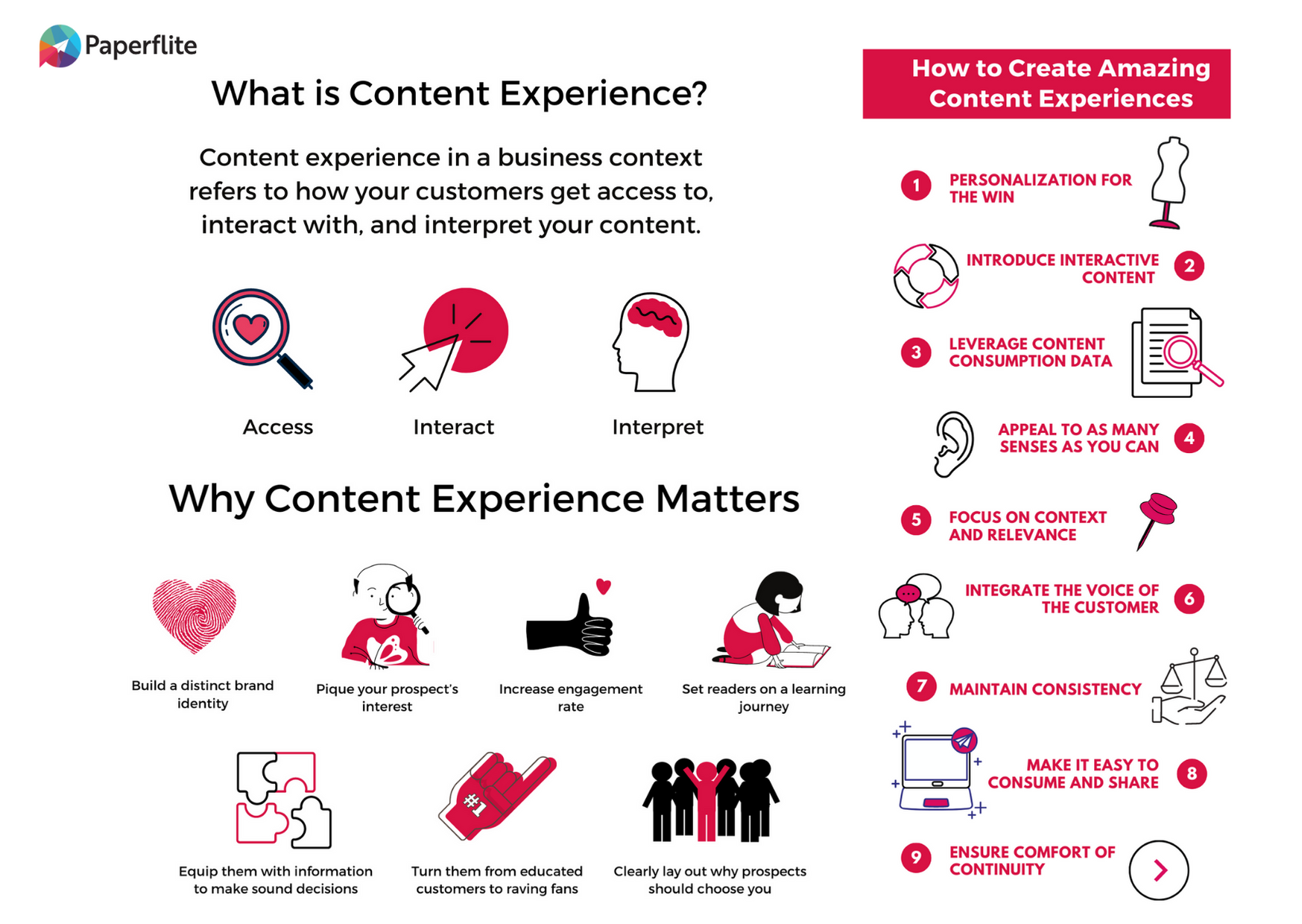
For this edition, we asked leaders in the marketing and content space to weigh in on how they’re ensuring their audience gets the best content experience.
We waited with bated breath for several weeks and now the jury is out!
Here’s a blueprint for you to roll with:
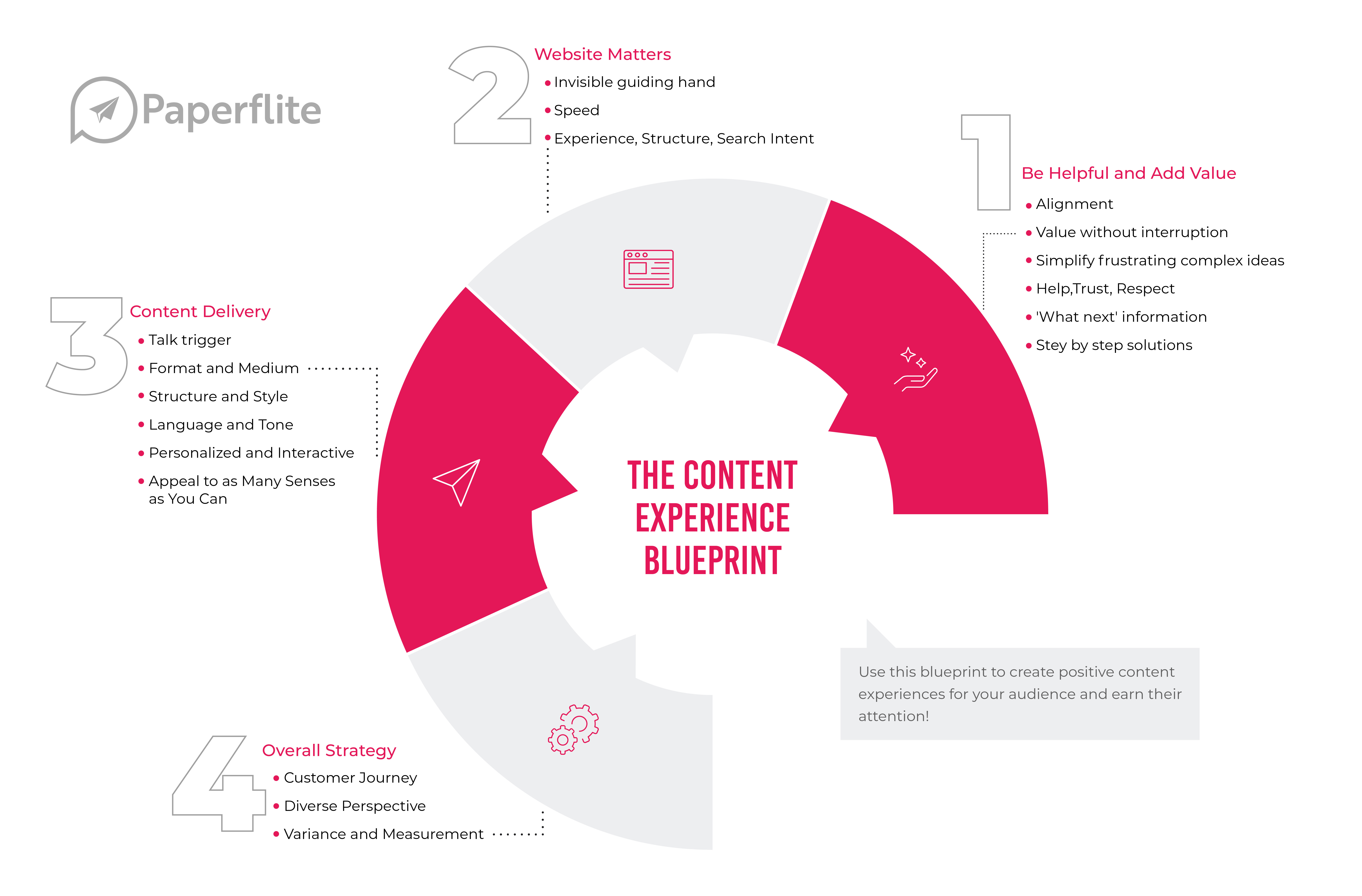
(I) Be Helpful and Add Value
The urge to resist creating self-serving content and instead offer helpful content is a ubiquitous challenge for content teams.
So much so that some of you may even need to be persuaded to create this type of content. We’re placing our bets on this illustration by Overthink group to do the convincing:
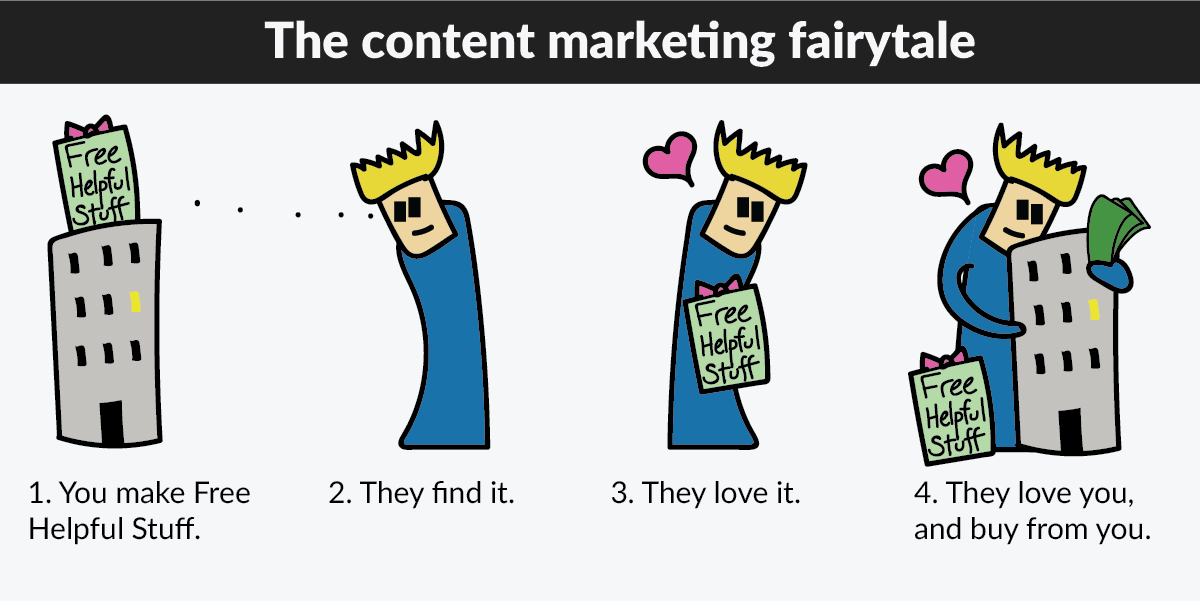
Now then, it’s time to show you HOW to be helpful and provide value!

#1 Alignment
Dino H Carter, Brand Strategist & Marketing Consultant, D Branding, introduces the holy trinity rule to create a positive content experience. The trinity here means that there must be alignment between the brand, the content, and the consumers.
“You have to give the audience (the customers) what they want to watch or read, not what you want to say or write about,” says Carter.
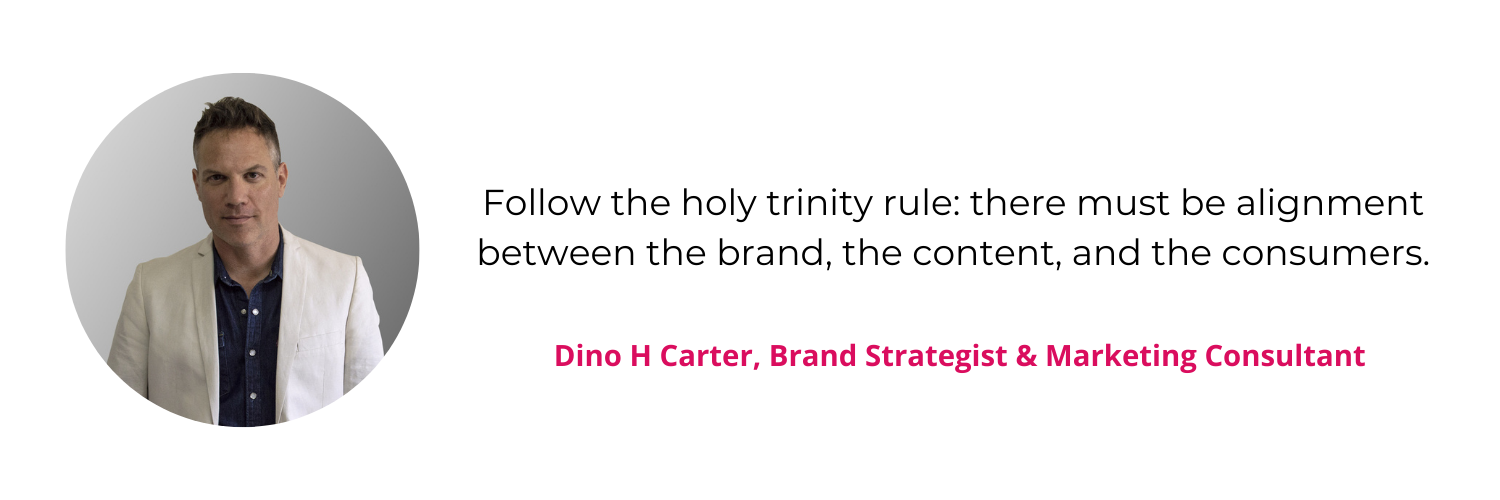
“If your content is all about you, your product, your company, and all you use it for is promoting products and sales, it will never work. You need to supply relevant and useful information that will make your customers' day better. 80% of your content should provide value and only 20% promotion”.
Andra Zaharia, Freelance Content Marketer, agrees. “A top-notch content experience to (potential) customers and other stakeholders relies on one key aspect: alignment”.
According to her, alignment translates to:
- Deep understanding of your customers’ questions
- Knowing which issues that you solve match what your customers care about
- Strong interconnectivity between content assets
- Options to consume content on their terms
- The team’s ability to suggest content that fits the customers’ needs

She further adds, “Consistency, specificity, and being benefit-driven all stem from a deep knowledge of the customers’ needs and priorities. You can get that by doing customer interviews, customer research, and by being deeply embedded in the communities they prefer to hand around in”.
#2 Value without interruption
At Authority Hacker, offering pure value is the only aim of the game. Co-founder Mark Webster, however, warns that “this doesn't just mean creating an epic piece of content. It also means how it's delivered. If you're offering value, should you really be running banner ads all over your site? Do you want obtrusive pop-ups interrupting the experience? Do your videos have obtrusive sponsorship spiels mid-way through?”.

“I'm not saying there's no place for these things - after all, it makes business sense to include these things. However, if you're looking at crafting the perfect content experience, it's important to understand that you may have to sacrifice the potential revenue from these things in exchange for the greater good,” he concludes.
#3 Simplify frustrating complex ideas
Jake Rheude, VP of Marketing at Red Stag Fulfillment, highlights an important, yet overlooked perspective - “B2B content is meant to simplify frustratingly complex ideas”.
He also illustrates it with an example. “One of the most useful pieces of content we have built on our website is a dimensional weight calculator.

This simple tool makes life a lot easier for our typical client because it gives them information that is otherwise mind-numbingly hard to calculate for themself. Our main objective is to make what can be a frustrating and complicated process crystal clear”.
#4 Help, Trust, Respect
Jake Meador, Director of Content Strategy at Mobile Text Alerts, digs in even further. “There are three goals you should have with content experience,” begins Meador as he puts on his explainer robe and hat.
- “First, your content should help prospects and customers. When people come to your website, they’re essentially looking to solve a problem. If you help them solve this, your content has succeeded. If you don't, your content has failed, they've had a bad experience, and they'll go elsewhere in search of help.
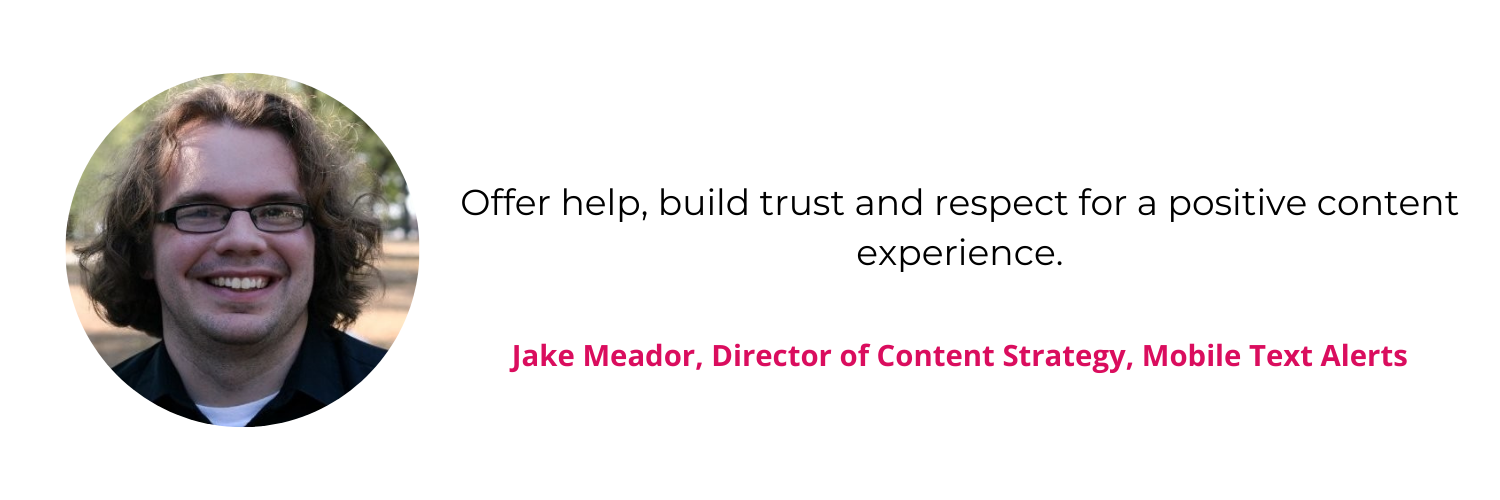
- Second, your content should build trust with prospects and customers. Without trust, you'll struggle to produce one sale and you'll find it basically impossible to establish an ongoing relationship in which a customer buys over and over or signs a long-term contract with your company.
- Third, your content should build respect with prospects and customers. If people come away from your marketing or web content thinking ‘that was really thoughtful,’ then you haven't simply helped them and built trust, you have given them a reason to see you as a thought leader in your industry”, he finishes.
#5 ‘What next’ information
“Deliver simple solutions and 'what next' information to help customers move along their buying journey and/or solve problems,” shares Will Shaw, Founder, Golf Insider UK.

“For example, our coaching pieces helpfully explain what causes an errant golf shot, but continue to show the golfer how to practice – again emphasizing the next step. If these 'next steps' can provide the customer with a clear, simple win we find we create a fan of our brand who will keep coming back.
It could be argued this approach is far easier to implement in a sports-based business. However, all businesses have customers looking for solutions, giving that customer an actionable next step is a simple but effective way to give that person value and a reason to come back,", he reveals!
#6 Step by step solutions
Cyrus Yung, Director, Ascelade Pte Ltd, chips in - “Good content experience is to provide answers to the searchers' queries with step-by-step solutions.
For example, if someone is googling "how to get rid of pimples fast", they want a solution to get rid of their pimples fast. A clear step by step instructions and what are the items needed.

Providing other related visuals like pictures and videos (as in-depth and clear as possible) will improve the searcher's experience”.
Y’all get two BIG thumbs up from our team!

(II) Website Matters
Close your eyes and picture that time you had to face the wrath of a soul-draining website.
Did it resemble something like this:

If it did, you know there are VERY few things that can match this level of frustration and that you wouldn’t wish this even on your worst enemy.
Why would you cast this on your prospects then? Seems only logical not to do it. Find out how you can enhance the content experience by keeping an eye on your website:

#1 Invisible guiding hand
“If users want to visit your blog, they shouldn't spend minutes looking for the link. Instead, your UI should be like an invisible guiding hand. As soon as the user thinks of your blog, the link appears because before they thought of it, your UI was already guiding them towards the blog”, says Reuben Yonatan, Founder & CEO, GetVoIP.

“Also keep an eye out for topics your readers are interested in and optimize your content for relevance. If your content is always relevant, your readership will look forward to consuming it”, he adds.
#2 Speed
Sharing his two cents on how website speed impacts content experience, here’s Calloway Cook, President, Illuminate Labs - “No matter how great the content is, the user will have a poor experience if they have to wait 10 seconds while the page loads. They will become frustrated and your brand value will decrease. Conversely, a site that loads up in two seconds on mobile will make the user happy and cause them to think highly of your brand”.

“We're constantly working to improve the page load speed of our blog not only for SEO benefit but also to improve the content experience (these two things go hand-in-hand). What we've found is that with faster load time there's a lower bounce rate, which translates to more satisfied users,” he signs off.
Sharing the same train of thought is Brian Robben, CEO, Robben Media. “Fast load times, links working, simple to navigate instructions, and high value are what you're aiming for. Now you should always A/B test your current content experience to ensure it's a positive one.

For example, if you don't test, then your webinar could have slow load times, or the PDF download doesn't work. And then a great experience where someone is entering your sales funnel turns into a disaster!”.
Guess who has to deal with this disaster?

#3 Experience, Structure, Search Intent
Domantas Gudeliauskas, Marketing Manager at Zyro explains that there are three core aspects that make for a good content experience – the website's user experience, article structure, and understanding search intent.
- A positive website experience includes loading times, how you structure breadcrumbs or use tags, and subjects for articles. If a piece is hard to find, loads in with broken images or takes too long, you need to make fixing it a priority ASAP.

- Secondly, your article structure also needs to be easy to navigate, understand, and read. That means the way you use headings and subheadings should be uniform across all posts. Make your paragraphs short and easily skimmable while highlighting key information. Your readers will thank you for it and will show this by being far less likely to click off.
- Lastly, you need to understand and make use of search intent. Dig deep and figure out what your visitors want when they click off of a Google SERP link to your page and give them the answer immediately. Don't beat around the bush, or hold the answer hostage between dozens of paragraphs. That won't increase dwell time. It will only frustrate visitors and make them associate your domain with a disappointing experience.
Also Consider Reading: Your Prospects Deserve a Content Experience - Here's Why
(III) Content Delivery
Drew Donaldson, Growth Strategist & Founder, GroHaus, speaks for all of us when he says, "While we could write Bibles for people on the best strategies and tactics, we have found that that is not the best way to present information.
Content without taking into account the experience of the user is the equivalent of writing an encyclopedia, all information without any style or flavour is just boring.

A better way is to make sure that the experience we are delivering with the content, despite the content format, is making it engaging and interesting for the audience”.
Picking up the same thread as that of Drew, these experts reveal how you can perfect your content delivery:

#1 Talk trigger
Sydney Myers, Founder, Dallas Hoops Cast, insists that every piece of content should have what she calls a ‘talk trigger’. Talk trigger, she explains, is something that’s different and worth talking about, tweeting about, and sharing. This could be research, an interview, a chart, or an infographic or visual. But every piece must have something that makes it unique.
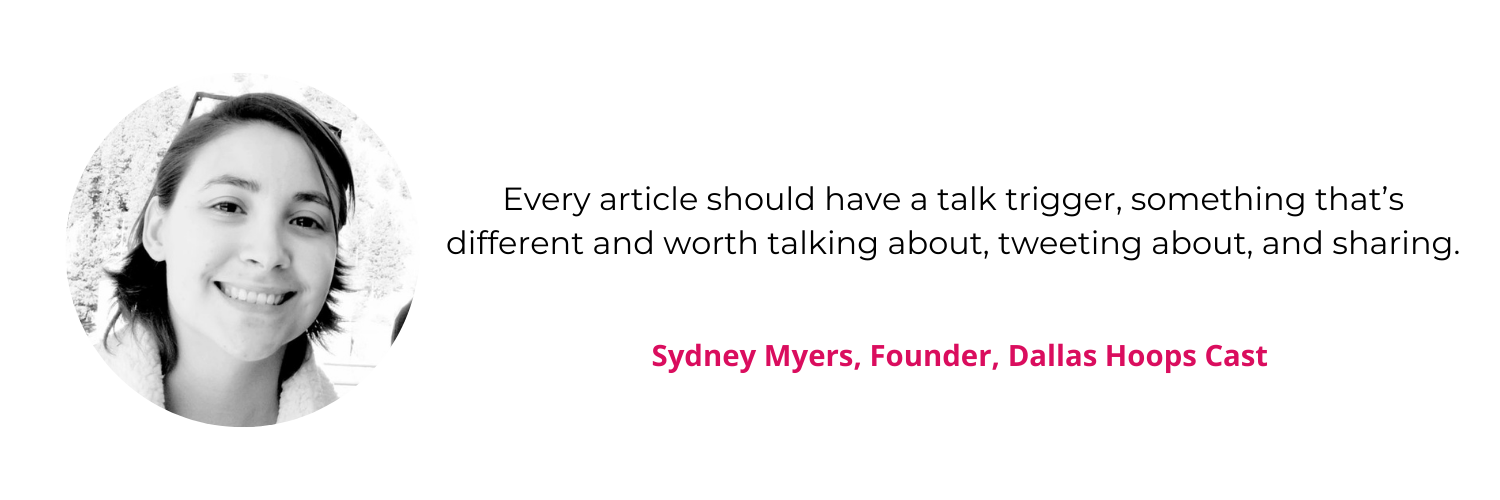
”By following that principle, I’m able to create content that people have to share, read, and link to because they can’t find it anywhere else,” she adds.
Agreeing with her about this kind of engagement is Karl Robinson, Director & Co-founder, Logicata.
“Especially now, at a time where people are separate and struggling to connect, building an online community is absolutely essential for your business,” he begins. “You can do this by creating content that sparks conversation and debate amongst your consumers. This doesn’t mean it always has to be something that would create difficult discussion.

For example, a restaurant could simply connect with its audience by asking what they might like to see on a new menu when they reopen, offer a few examples to give the conversation a path while involving the customers and making them feel a part of your future.
It is that sort of content engagement that will see consumers return to be a part of your discussions – because you are openly inviting them to take part. With this sort of content experience, try to keep what you are asking relevant, rather than basic, and something that they might quickly engage with but move on just as quickly,” he advises.
#2 Format and Medium
Doing your research and delivering the content in the right format is crucial, feels Morgan Goettge, Founder & Content Creator, morgankg.com
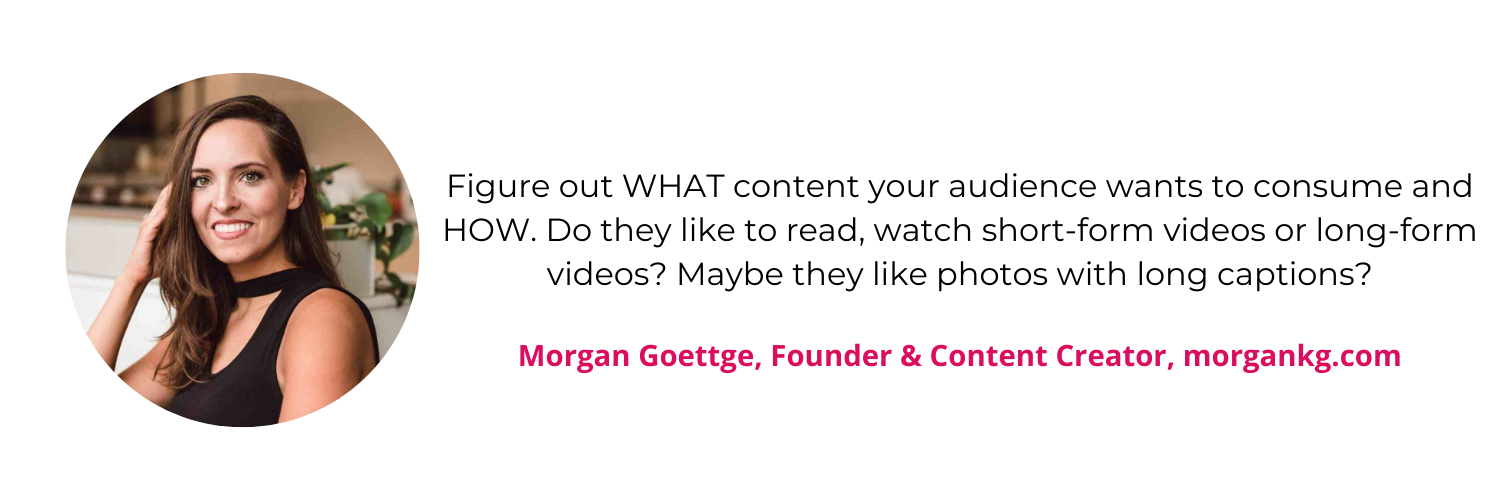
“Instead of creating a blog post around your favourite fall recipes, do some research on your target audience and figure out what they want to read or watch - this customer analysis will make all of the difference!
Next, find out how your audience likes to consume content. Do they like to read, watch short-form videos or long-form videos? Maybe they like photos with long captions. Regardless, you get the point - it is all about creating content that is interesting and engaging to your audience”.
Avinash Chandra, Founder & CEO, BrandLoom, agrees. Content experience isn’t the same today as it was 10 years back and is about delivering the right information to the right people, at the right time, in the form your customers want. It is about sharing content that meets the users’ needs as well as our business goals.

Further, the channels we use to deliver our content also play a key role here. It is crucial that your content reaches your audience in the way they want and on the medium they want.
#3 Structure and Style
“Composition, organization, and influence of the content are crucial for us at 1Dental,” says Aaron McWilliams, its Director of Marketing.
- The composition of the content has to do with what it is made of. Is it relevant and engaging? Is it aesthetically pleasing? Does it look polished and professional? Is it on-brand? Where will the user come into contact with said content?

- Next, is your content organized correctly? Consumers should be able to find what they are looking for quickly and easily. Well organized content leads to a positive content experience and will keep your audience coming back.
- The last and most important element of the content experience is the influence it has on the audience. You can create all the content you want but if it isn't motivating your audience to take any action, the bottom line is it's not effective. The best content will have a call to action, which will influence someone to take the next step. If your content has emotionally engaged the audience, they will feel more inclined to your suggested action.
According to Nathan Sebastian, Content Marketer at GoodFirms, “The structure of the content, page design, images, call to action, and everything else that is included in the landing page or blogs is all a part of the content experience”.
- “The one way in which we ensure that the audience gets possible content experience is to maintain a consistent structure of all our content. It makes it easier for the audience to read and understand what’s written.

- Secondly, the images in all content formats. It is necessary to post images that perfectly summarize the content in an interesting way and make them less boring.
- Last but not least is the content style. When information is provided in a simple and precise manner, it has the potential to garner and retain the attention of the audience for a long time,” he concludes.
#4 Language and Tone
“Content experience is a powerful way to separate your content strategy from your competitors'. One simple way to improve content experience is to write the same way you'd talk with a friend”, declares Jayson DeMers, CEO, EmailAnalytics.

“This is, of course, industry-dependent, but in many cases, it's perfectly acceptable to communicate with your audience in a friendly, colloquial way. Taking this approach can help build a connection with your audience that boring, corporate-sounding content can't do.
One fantastic example is the work of Tim Urban, the author at the popular blog Wait But Why. He uses humour and hilarious hand-drawn images, stick figures, and simple graphs to bring an added dimension to his writing. It's a masterful example of leveraging content experience to keep readers coming back again and again.”
Ask Samuel Ballinger, Creative Director at Postali, what a positive content experience means to him and he’ll respond with this - “The best content experience is when a piece of content impacts your readers and inspires them to share your content with their friends or on social media, and most importantly, persuades them to buy your product or service.
To do this, your content should always be written in a language that resonates with your users”.
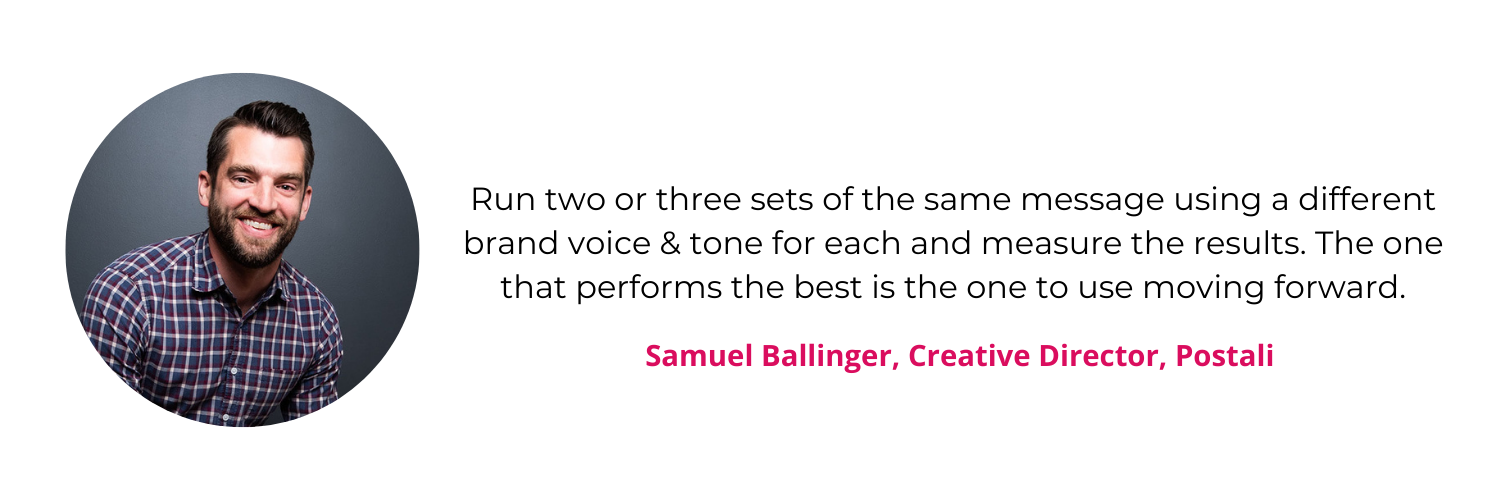
He continues, “One of the most effective (and easiest) ways of figuring out that language is through A/B testing. At Postali, we do this by running two or three sets of the same message, using a different brand voice & tone for each and measuring the results. The one that performs the best is the one we use moving forward for that specific platform”.
Chelsea Roller, Content Marketing Manager at Rank Fuse Digital Marketing, agrees with Ballinger. According to her, readers should be able to immediately recognize that the content is coming from you. “This means that verbiage, tone, design, and topics are all extensively thought out”.
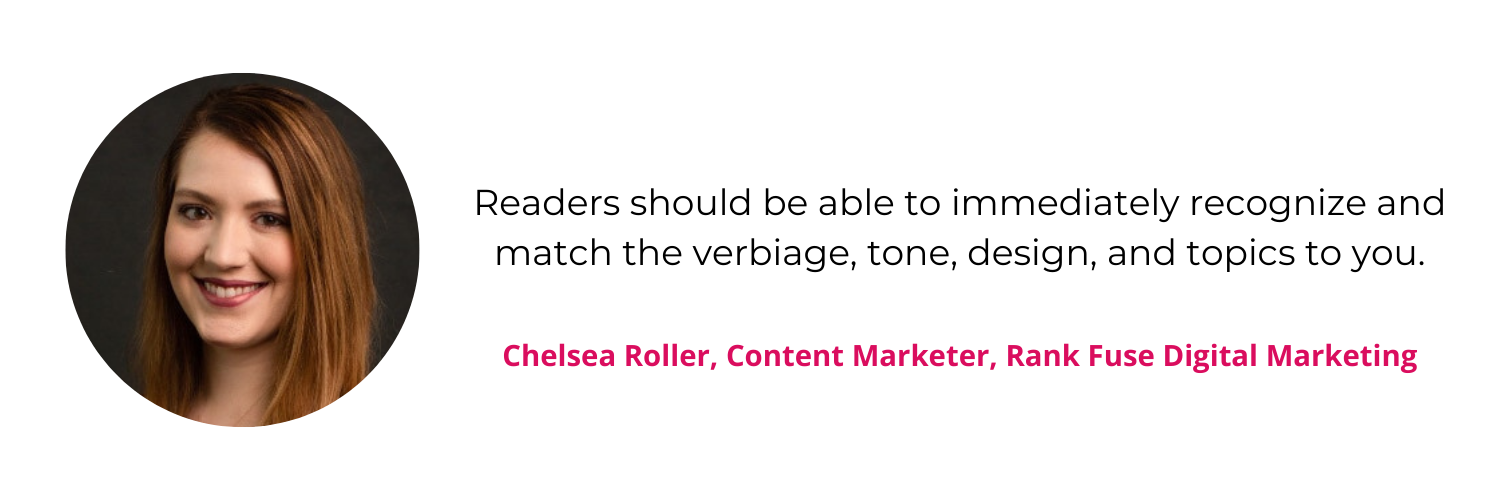
“We also ensure that we target the keywords that our clients' audiences would be using to search. Every time we put together a new page or blog, we focus on creating a cohesive piece of content targeting all the proper keywords while still sticking to our client's brand identity,” she adds.
#5 Personalized and Interactive
Throwing light on how personalized and interactive content can drive conversion is Maria Saigatova, Head of Content at Blast Sourcing. “We use personalization to customize the content to align it with customer interests and trigger their emotions. On another note, interactive experience helps us to engage with our readers, and bring them more positive feelings.

As a result, content experience can be related to the flow of greatly executed and smartly crafted content, created to engage readers across their customer journey and bring value to every step of their interaction with the brand,” she says.
“A great content experience should be personalized, helpful, user-centric, contextual, connect to the user’s circumstances, organized, and easy to understand,” adds Todd Ramlin, Manager, at Cable Compare.
“One example of a business providing great content experience is MailChimp. Known for its mascot Freddie the intuitive UI, it’s one of the coolest brands when it comes to delivering content experiences. MailChimp divides its content experiences into categories that cover the fundamentals of email marketing, practical marketing tips, product guides/tutorials, success stories, and product updates”.
#6 Appeal to as Many Senses as You Can
“Remember the good old days when we visited the movie theatres? I’d be lying through my teeth if I said I didn’t readily think of the tub of popcorn or that of the pretzels. Or the undeniably powerful audio systems.
If you think about it, every experience you distinctly remember would have definitely appealed to more than one of your senses. And you can do it with your content too!,” exclaims Akshaya Chandramouli, Content Marketing Executive here at Paperflite.
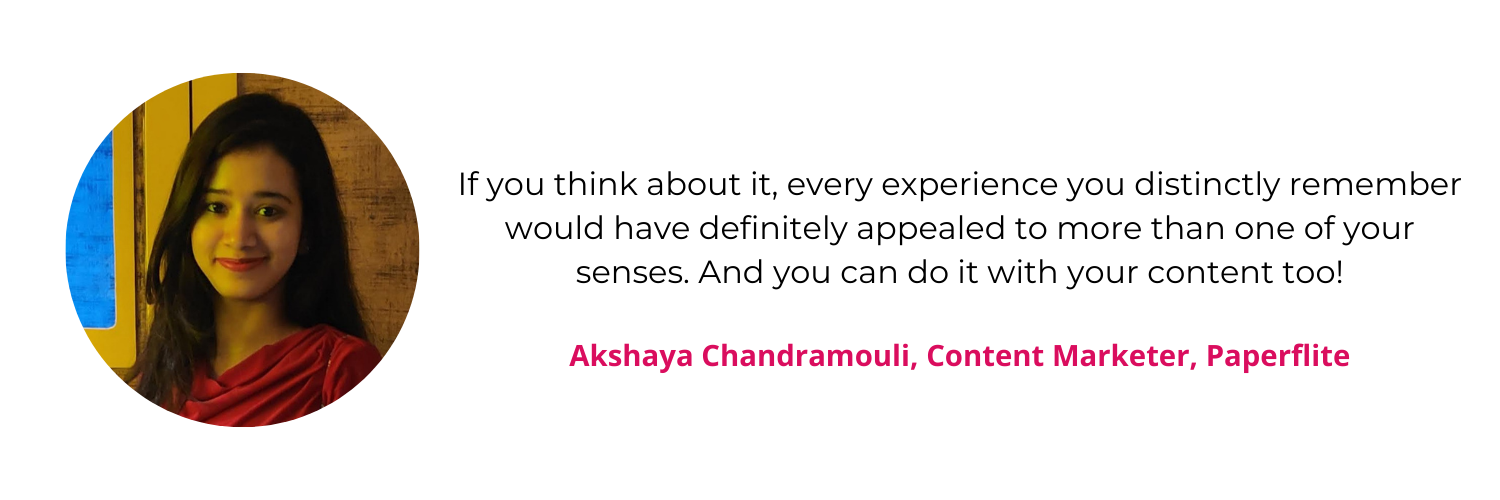
"Here’s one way to get started - Try complementing that educational video or blog post with a specially curated podcast list that will truly help your readers.
Narrative Science nailed it in their recent Camp Revenue summit, which was a celebration of marketing and analytics that lasted 2 days and showcased experts from prominent brands. From a specially curated Spotify playlist to handpicked books and giveaways, it truly was an experience that was one-of-its-kind," she finishes.
(IV) Overall Strategy
If you have a content calendar, you don’t need a content strategy, right?
Wrong.
It’s equivalent to saying:
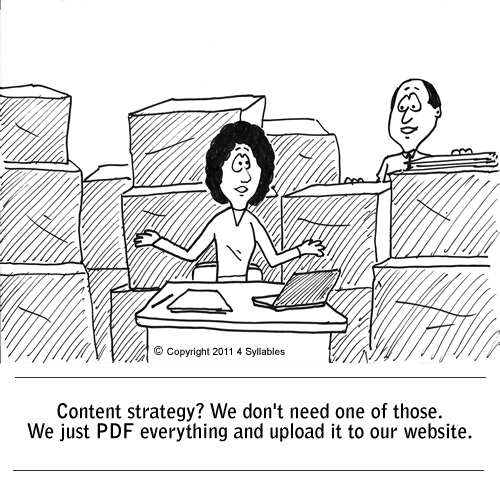
We know what you’re thinking - ‘But does content strategy play a role in creating content experiences for my readers?’.
Evidently, it does.

#1 Customer Journey
According to Quincy Smith, Co-Founder, ESL Authority, your strategy should be devised in such a way that you create a journey for your users using all of your marketing channels.
“For example, a user might land on a blog page thanks to your SEO, get their second touch via a retargeting ad that promotes a follow up (ie mid funnel) piece of content, and convert after downloading a white paper from your website.
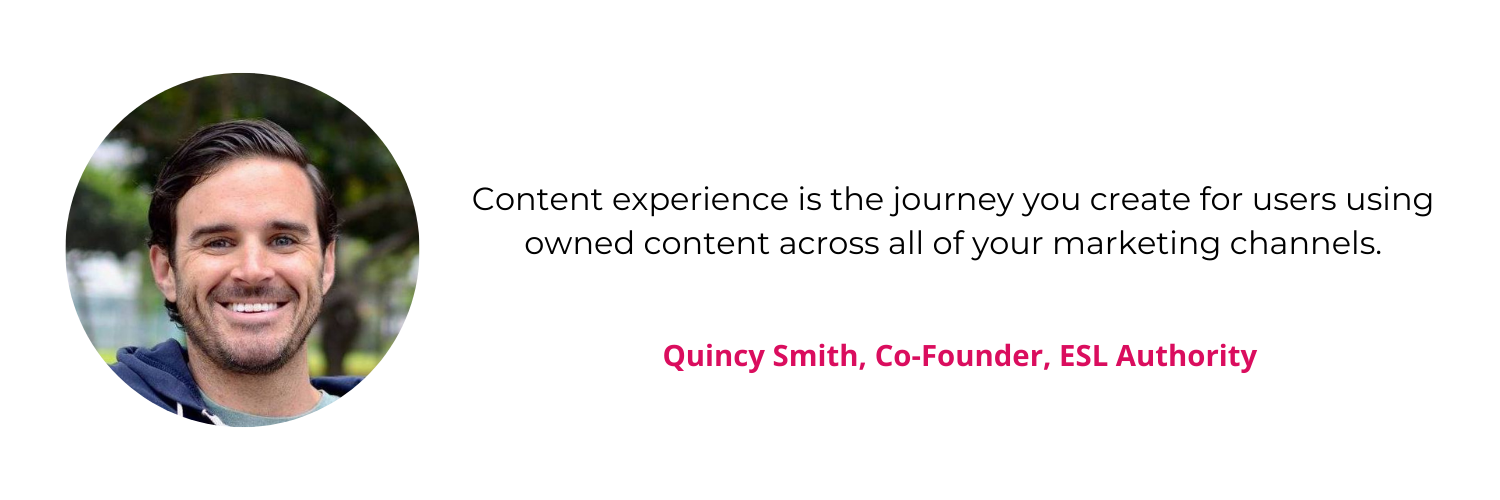
In an ideal world, you not only have content that speaks to each step of your funnel but also have the means to put that content where it needs to be at the right moment in time.
The goal is to be attentive without being overwhelming and it’s very hard to send too many ‘touches’ when the content is super relevant - creating a comprehensive content experience allows us to do that and ensure the user is getting what they need when they reach that point in the process”.
#2 Diverse Perspectives
Liam Carnahan, Content Strategist & SEO Expert at Inkwell, offers a word of caution about trying to gather diverse perspectives. “There is a delicate balance between gathering diverse perspectives and too many cooks in the kitchen when it comes to content and the resulting experience. That's why there should be one single person - either in house or a freelancer/consultant - whose singular job is to oversee and steer the overall content in the right direction.

It's that person's responsibility to gather input from every other part of the business and weave it into the right points within the strategy. That's one of the reasons I like being a content strategist. You get to see every little bit of an organization if you're doing your job right,” he completes.
#3 Variance and Measurement
"Your content should be spaced with the intended set of 'highs' and 'lows' for the reader. You would really want them to spend a significantly longer time on your highs than the lows," begins Dinesh Ravindran, the Director of Marketing at Paperflite.
"For instance, a framework, blueprint, or a quadrant would demand a longer read time than a testimony with an image, which might have one-third or one-fourth of the read time. However, the experience you deliver in that short time should be no less than that you deliver for the long read. This experience can be better devised if it's measured unequivocally amongst a large set of your target audience.

In my opinion, some of the excellent content pieces which deliver immaculate experience fail in their outcome if it's not delivered at the right time to the right set of audience or/and if it's not stitched with the right experience graph for the highs and lows.
Devising a content strategy for every year, quarter, month and even week will need a strong mix of content that delivers a varied set of experiences and it has to be measured in terms how it is being read by the intended set of target audience," he concludes.
And with that, we’re calling it a wrap!
Have a take on content experience you’d like to share with us? Write to us at marketing@paperflite.com and we’d love to feature you here!

